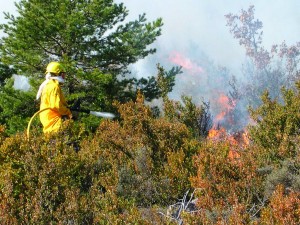 Title: Greenhouse gas management in European land use systems. GHG-Europe. FP7-ENV-2009-1.
Title: Greenhouse gas management in European land use systems. GHG-Europe. FP7-ENV-2009-1.
Funding Agency: European Comission. EU-RTD integrated project. VII FP
Participating organizations: CTFC; CEAM between others
Duration: 2010-2013.
PI: Dr. Annette Freibauer, Johann Heinrich von Thünen Institute (VTI), Germany
Subproject Researchers: Casals P.; Rovira P; Romanyà J; Lopez-Sangil, L; Montané F; Martí-Roura, M.
Web address: http://www.ghg-europe.eu/.
Summary: The GHG-Europe project aims to improve our understanding and capacity for predicting the European terrestrial carbon and greenhouse gas budget. In the view of climate change it is crucial to know the amount of GHGs released into the atmosphere by anthropogenic activities. But also natural drivers such as climate variability influence the GHG balance of European ecosystems. The objective of WP2 (Critical processes), is to provide full C and CO2, N2O and CH4 (GHG) budgets of European major ecosystem types at annual to decadal time scales and to quantify the response and vulnerability of terrestrial ecosystems to anthropogenic and natural drivers focusing on critical processes for GHG fluxes based on best available observational evidence. Process studies that utilize long-term C and GHG observations, ecosystem manipulations, factorial experiments and gradients of climate, land use and management intensity will elucidate the reaction of C and GHG processes to changes in anthropogenic and natural drivers.
Shrublands cover large parts of the Mediterranean with considerable enlargement in some regions by woody encroachments but this ecosystem has been completely ignored in the European C bugdet (Schulze et al. 2008) although it may act as a significant C sink (Pacala et al. 2001). Our research activity (Task 2.6) focus on provide data and process understanding of Mediterranean shrubland management and woody encroachment dynamics for a better representation of shrublands in process-based models for European GHG balances.
Related Papers:
Casals P, Lopez-Sangil L, Carrara A, Gimeno C, Nogués S, 2011. Autotrophic and heterotrophic contributions to short-term soil CO2 efflux following simulated summer precipitation pulses in a Mediterranean dehesa. Global Biogeochemical Cycles, 25, GB 3012, doi:10.1029/2010GB003973
Martí-Roura M, Casals P, Romanyà J, 2011. Temporal changes in soil organic C under Mediterranean shrublands and grasslands: Impact of fire and drought. Plant and Soil, 338, 289-300 doi: 10.1007/s11104-010-0485-0
Lopez-Sangil L, Rousk J, Wallander H, Casals P, 2011. Microbial growth measurements reveal that land-use abandonment promotes a fungal dominance of SOM decomposition in grazed Mediterranean ecosystems. Biology and Fertility of Soils, 47, 129–138 doi: 10.1007/s00374-010-0510-8
Casals P, Garcia-Pausas J, Montané F, Romanyà J, Rovira P, 2010 Root decomposition in grazed and abandoned Mediterranean and mountain grasslands estimated by standard labelled roots. Agriculture, Ecosystems and Environment, 139, 759-765
Montané F, Romanyà J, Rovira P, Casals P. 2010. Aboveground litter quality changes may drive soil organic carbon increase after shrub encroachment into mountain grasslands. Plant and Soil, 337, 151-165. Doi: 10.1007/s11104-010-0512-1
Montané F, Casals P, Dale MRT. 2010. Spatial patterns of shrub encroachment in neighbouring grassland communities in the Pyrenees: floristic composition heterogeneity drives shrub proliferation rates. Plant Ecology, 211, 267-278 Doi: 10.1007/s11258-010-9788-8